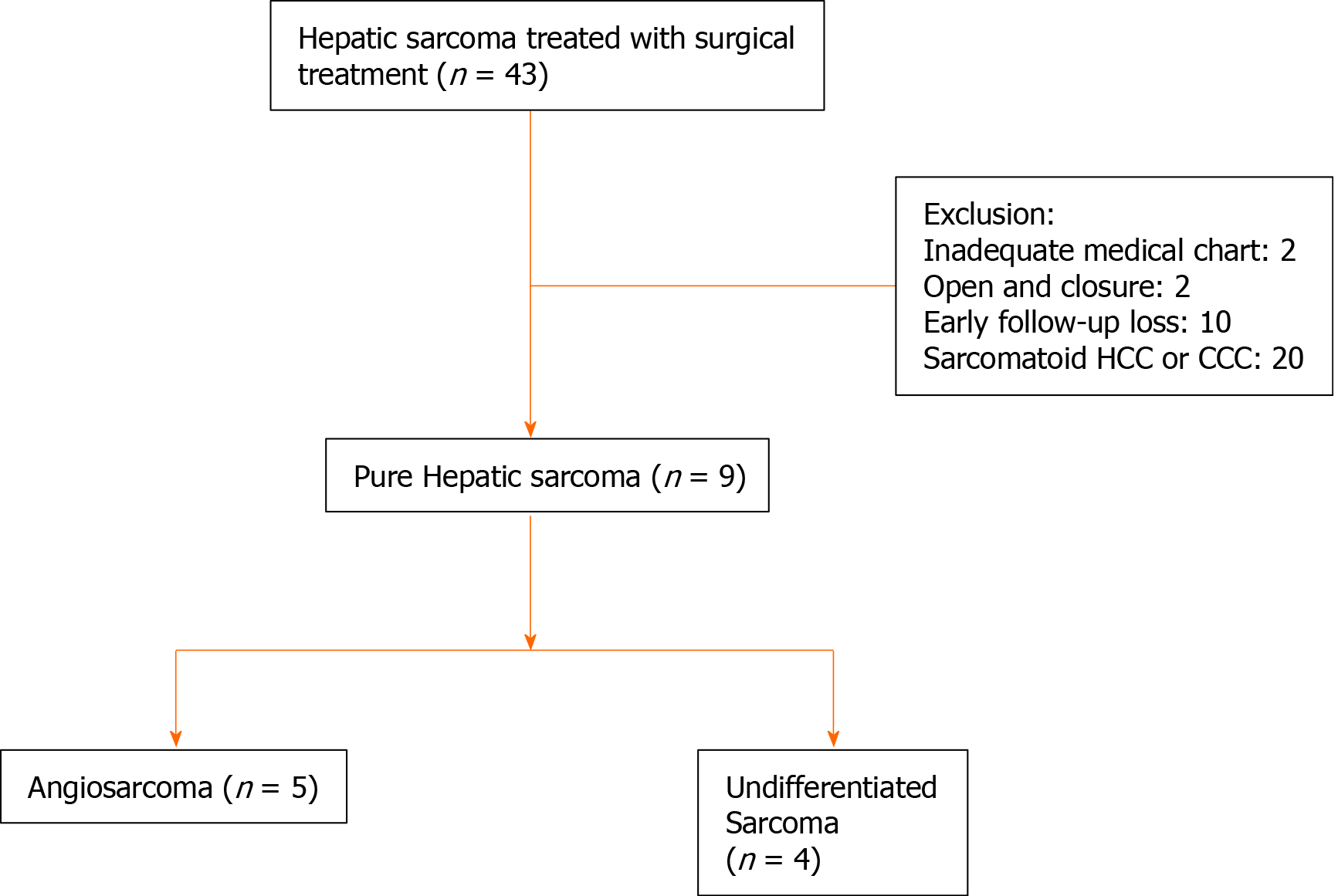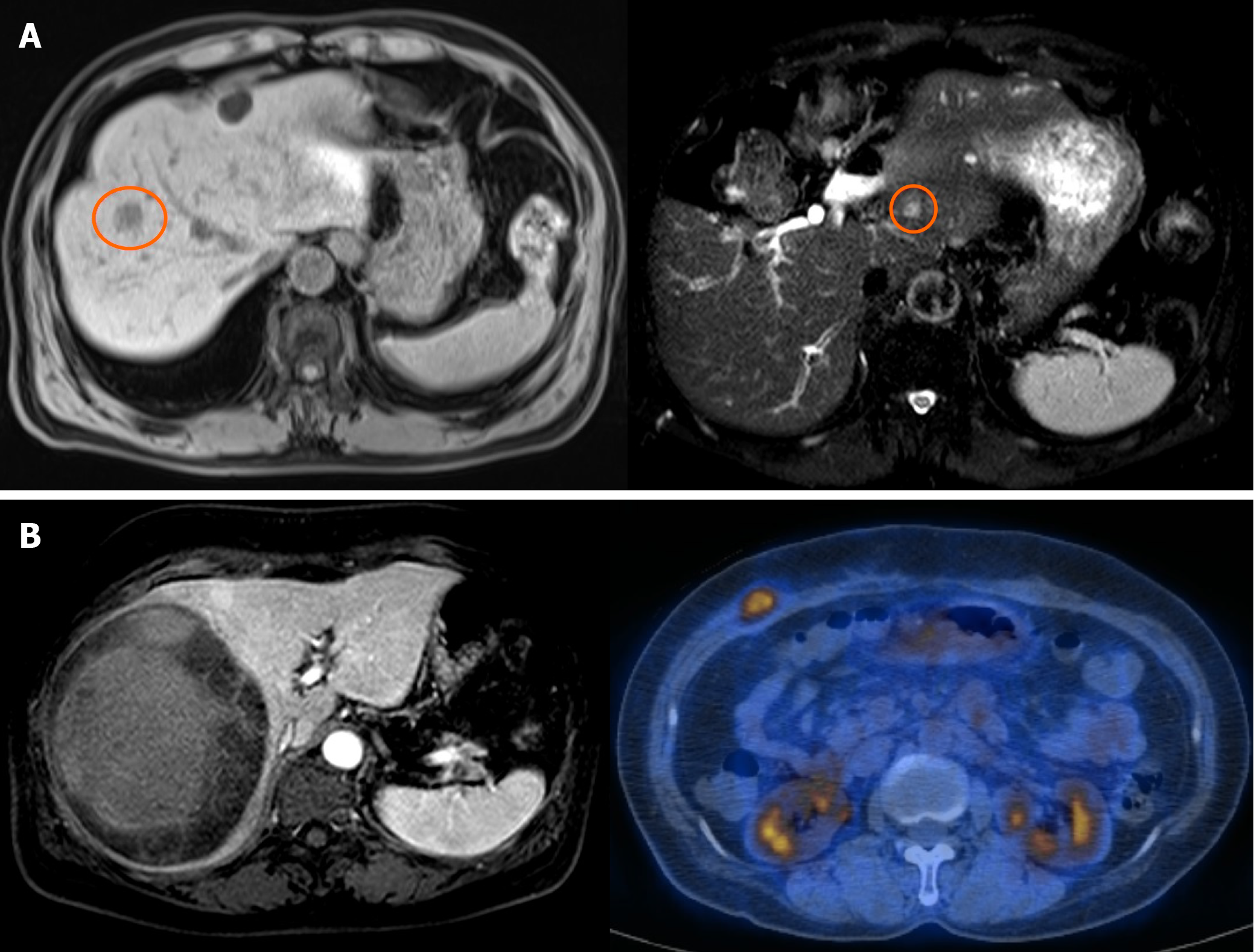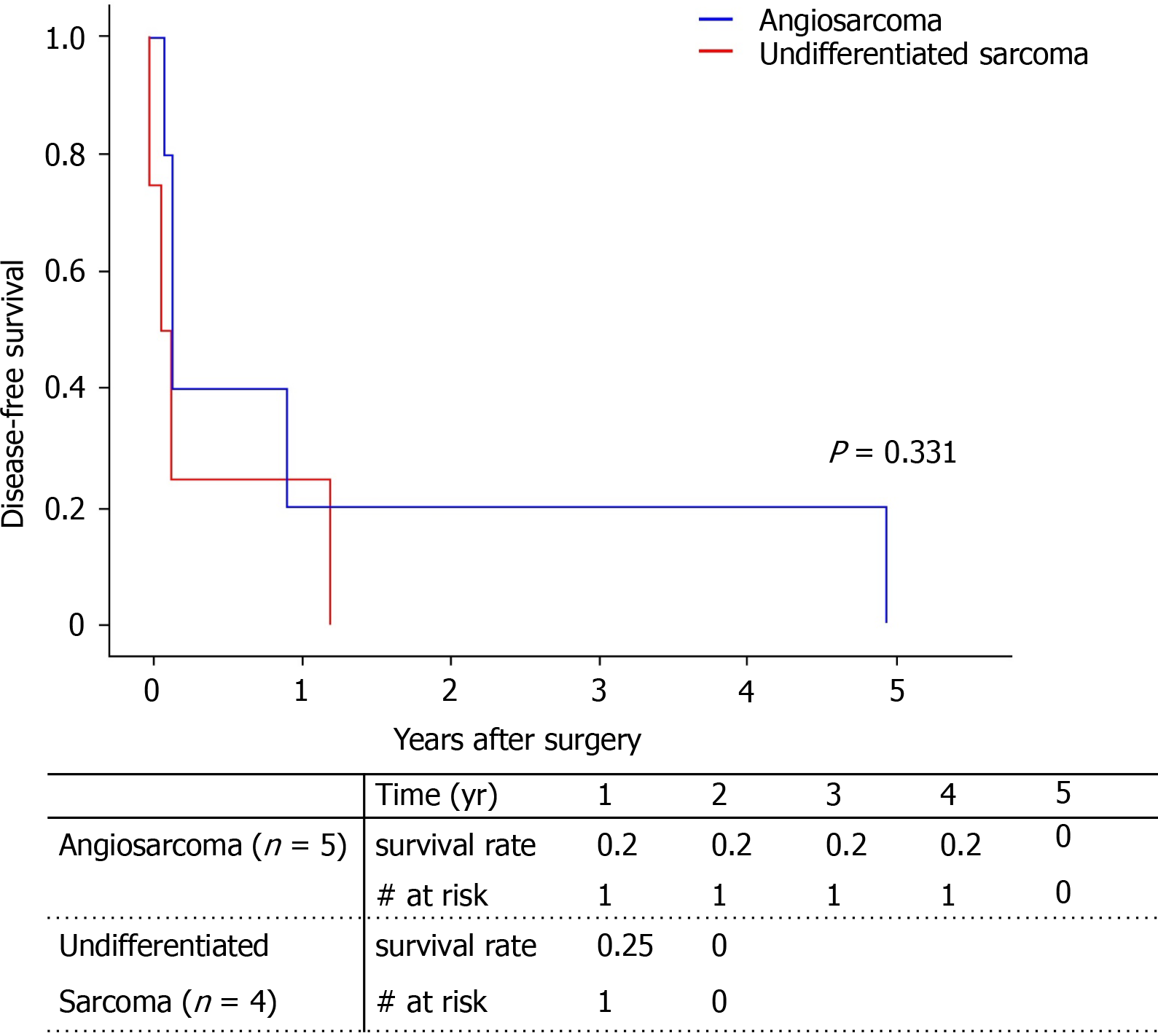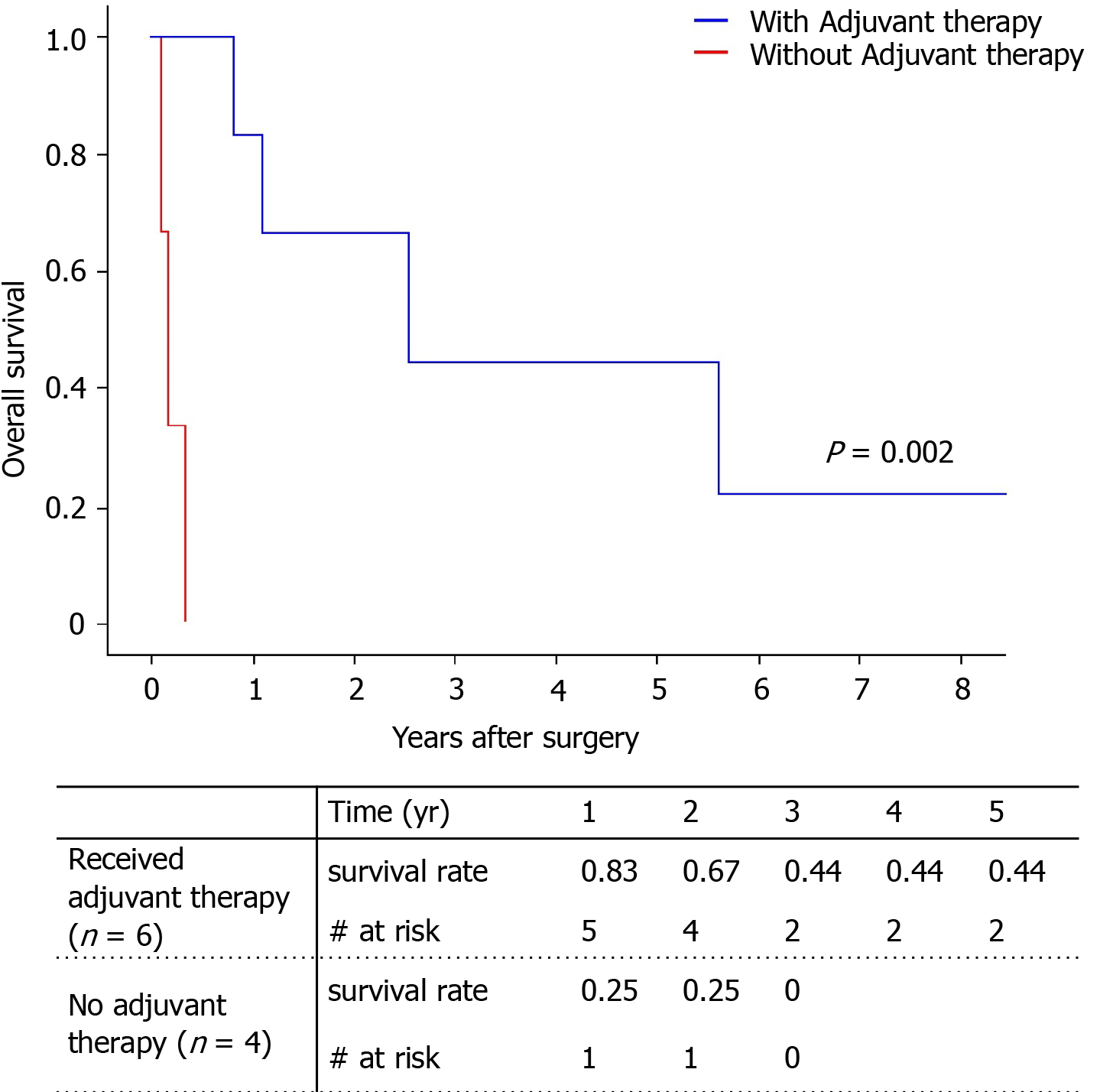Copyright
©The Author(s) 2021.
World J Hepatol. May 27, 2021; 13(5): 584-594
Published online May 27, 2021. doi: 10.4254/wjh.v13.i5.584
Published online May 27, 2021. doi: 10.4254/wjh.v13.i5.584
Figure 1 Flow chart of selecting pure hepatic sarcoma.
5 cases of angiosarcoma and 4 cases of undifferentiated sarcoma were included. HCC: Hepatocellular carcinoma; CCC: Cholangiocellular carcinoma.
Figure 2 Images of a surviving patient (cases 7 and 8).
A: Case 7. Left: T1 magnetic resonance imaging (MRI) of pre-operative angiosarcoma on S8 (orange circle). Right: T2 MRI of recurrence on S2 five years after central hepatectomy; B: Case 8. Left: MRI of pre-operative sarcoma. An 11.5 cm circumscribed mass with hemorrhage on the Rt. lobe. Right: Positron emission tomography-computed tomography of the recurrent mass. Focal fluoro-deoxyglucose uptake at the Rt. anterior abdominal wall.
Figure 3 Disease-free survival.
Median disease-free survival was 52 d. There was no statistical difference between angiosarcoma and undifferentiated sarcoma groups.
Figure 4 Overall survival.
The 5-year survival rate was 29.6%. There was no significant difference between survival of the angiosarcoma and undifferentiated sarcoma groups.
Figure 5 Overall survival depending on adjuvant therapies.
Patients who received adjuvant therapy showed higher overall survival rate.
- Citation: Kim SJ, Rhu J, Kim JM, Choi GS, Joh JW. Surgical treatment outcomes of primary hepatic sarcomas: A single-center experience. World J Hepatol 2021; 13(5): 584-594
- URL: https://www.wjgnet.com/1948-5182/full/v13/i5/584.htm
- DOI: https://dx.doi.org/10.4254/wjh.v13.i5.584

















